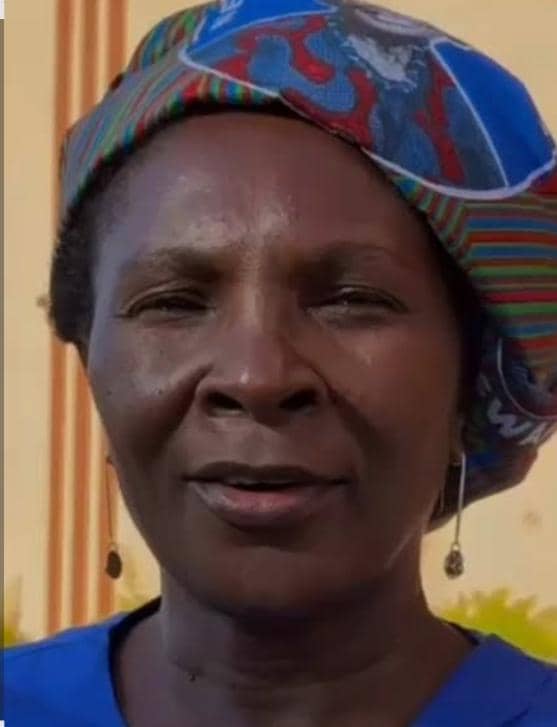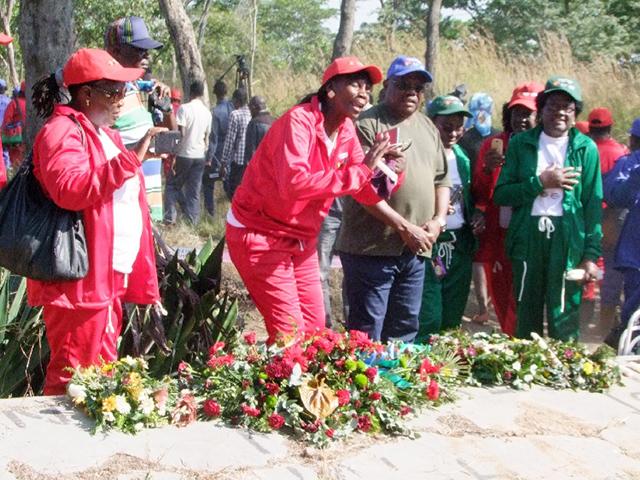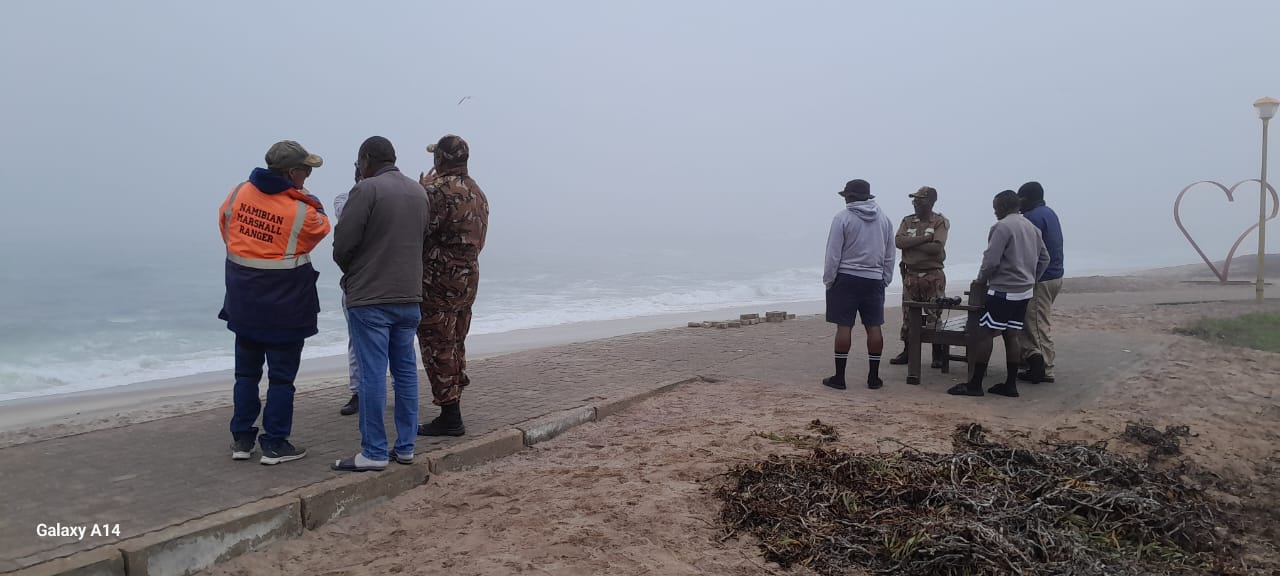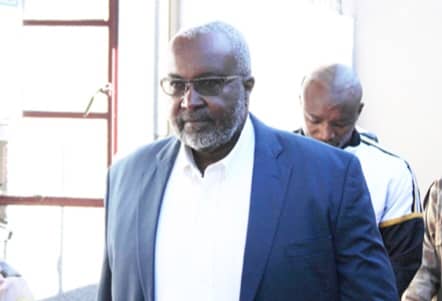FOR the last four years, I’ve been following the development of the greatest film project the people of Namibia have ever known.
From the start – when Pacon introduced the idea of making a film based on the life story of Sam Nujoma, first President and founding father of the Namibian nation – I have questioned and enquired, interviewed and sometimes even harassed those in the know, so as to inform myself and my fellow Namibians about this project. I have followed the trail of money leaking from the national coffers, I have spoken to the actors and gone to the sets, I have watched the Internet and phoned all over the world chasing information.And all because I believed that this project was important.Important to the Namibian film industry, important to the right and ability of Namibians to tell their own stories, important to the overall development of the Namibian nation and the security of its identity in face of the continuous onslaught of globalisation and foreign influences.I was mistaken.It was never about any Namibian nation.This film was always about Sam Nujoma.About his struggle, his sacrifice, his victory and his achievement of Namibian liberation from colonial rule.This week, for the first time, I got to watch ‘Namibia: The Struggle for Liberation’.The film has come a long way from what I first encountered when my interest began.Then it was known as ‘Where Others Wavered’.Now, four years and over N$90 million in taxpayer dollars later, the public is finally presented with an opportunity to watch the movie, when it is screened at the NTN and at the Old Katutura Cinema from Monday to Friday next week.(Screenings at the NTN will be at 15h00 and 19h00 each day for N$20, while those in Katutura will only be at 15h00 and will cost N$10.) THE GOOD, THE NOT SO GOOD AND THE BEARD So let’s get straight to it.On the positive side, one can see where the money went when watching the film, and that is a good thing.Various technical aspects are on a par with anything out there in the world, and Namibians need not be ashamed of showing this film internationally.The scope and size is satisfactory, the explosions sound real and the gory interrogation scenes help illustrate the enormous barriers of hatred and racism that were overcome in attaining Namibian independence.I feel proud to say that this is a product of Namibia.However, there are shortcomings.The make-up, in particular, is below par, highlighted by the fact that over the 50-year period covered in the film, the actors do not age convincingly.Sam Nujoma’s famous beard really does not get the treatment it deserves.Then there is the acting, where it was the big foreign names who missed the mark.Danny Glover is not at his best.Carl Lumbly, who plays the grown Nujoma, often lets his accent slip towards the Caribbean and just could not stay in character long enough not to let his first-world background show repeatedly throughout his performance.Saving performances were rendered by Namibia’s Obed Emvula and Krisjan Appollus, with the other Namibians in smaller roles also making a good contribution.As for the direction, Charles Burnett has dropped his flag with this offering.Not only does the story often seem like a checklist of historical facts rambled off in sequence, but some of the scenes jump so suddenly that the audience is often left trying to figure out where they last were in the story and just who that is now on screen.Nevertheless, for Namibia’s first major motion picture, there is nothing to stand back to the rest of the world for.There is quality in there somewhere.’INVISIBILITIES’ The problem is in what this film has to show the people here, living in the country.It shows how the Oshiwambo people suffered, and along with the Herero people, how they sacrificed and eventually overcame.There are a few mentions of ‘good whites’, and a ludicrous parody of Anton Lubowski, to demonstrate that not all white people are absolutely evil.San people feature as trackers working for Koevoet, to be tricked and shot dead and booby-trapped with hand-grenades so that their white masters would be blown to pieces when they came to investigate.San dancers also appear in their jinge-lappies at the Independence celebrations at the end of the film.Like me, any other Namibian, can expect to feel little at the conclusion of the film, other than left out.The other races in Namibia do not feature.They don’t fight, they don’t cry, they don’t kill or die, they just aren’t there.For Namibia as a nation, this film is sure to bring more division.It shows no reason for different ethnic groups to come together, after all, it shows how useless everyone other than the Oshiwambo and the Herero were in gaining Independence.There is no talk of One Namibia, One Nation – only children singing their rebellion against the whites, and later crowds singing the praises of Sam Nujoma and the power of Swapo.After all this is his story, their story.So I was wrong.The film has little in it for me.This film is for those who lived before me, those whose memories are in the past and whose futures lie there also.Those who would always remind us of apartheid and use it to justify where we are going.As the producers have said, this is only the first Namibian story, and there are many others to tell.They would have Namibians tell many stories on film and present them to the world, and so would I.The only question that remains is: now that the powers that be have told their story, now that the money has been spent and the American experts have gone home, now that the victory of Nujoma’s liberation of Namibia has been recorded on the big screen, where are the forgotten little stories going to find the money, the expertise, the support or the will to speak for themselves? Will the other stories ever be told? Just as with this project, we will have to wait and see.For those who bought the dream sold at Independence; the dream of one vibrant and diverse Namibian nation; for those of us who feel Namibian despite skin colour, family heritage or political affiliation, for us the struggle continues …I have followed the trail of money leaking from the national coffers, I have spoken to the actors and gone to the sets, I have watched the Internet and phoned all over the world chasing information.And all because I believed that this project was important.Important to the Namibian film industry, important to the right and ability of Namibians to tell their own stories, important to the overall development of the Namibian nation and the security of its identity in face of the continuous onslaught of globalisation and foreign influences.I was mistaken.It was never about any Namibian nation.This film was always about Sam Nujoma.About his struggle, his sacrifice, his victory and his achievement of Namibian liberation from colonial rule.This week, for the first time, I got to watch ‘Namibia: The Struggle for Liberation’.The film has come a long way from what I first encountered when my interest began.Then it was known as ‘Where Others Wavered’.Now, four years and over N$90 million in taxpayer dollars later, the public is finally presented with an opportunity to watch the movie, when it is screened at the NTN and at the Old Katutura Cinema from Monday to Friday next week.(Screenings at the NTN will be at 15h00 and 19h00 each day for N$20, while those in Katutura will only be at 15h00 and will cost N$10.) THE GOOD, THE NOT SO GOOD AND THE BEARD So let’s get straight to it.On the positive side, one can see where the money went when watching the film, and that is a good thing.Various technical aspects are on a par with anything out there in the world, and Namibians need not be ashamed of showing this film internationally.The scope and size is satisfactory, the explosions sound real and the gory interrogation scenes help illustrate the enormous barriers of hatred and racism that were overcome in attaining Namibian independence.I feel proud to say that this is a product of Namibia.However, there are shortcomings.The make-up, in particular, is below par, highlighted by the fact that over the 50-year period covered in the film, the actors do not age convincingly.Sam Nujoma’s famous beard really does not get the treatment it deserves.Then there is the acting, where it was the big foreign names who missed the mark.Danny Glover is not at his best.Carl Lumbly, who plays the grown Nujoma, often lets his accent slip towards the Caribbean and just could not stay in character long enough not to let his first-world background show repeatedly throughout his performance.Saving performances were rendered by Namibia’s Obed Emvula and Krisjan Appollus, with the other Namibians in smaller roles also making a good contribution.As for the direction, Charles Burnett has dropped his flag with this offering.Not only does the story often seem like a checklist of historical facts rambled off in sequence, but some of the scenes jump so suddenly that the audience is often left trying to figure out where they last were in the story and just who that is now on screen.Nevertheless, for Namibia’s first major motion picture, there is nothing to stand back to the rest of the world for.There is quality in there somewhere.’INVISIBILITIES’ The problem is in what this film has to show the people here, living in the country.It shows how the Oshiwambo people suffered, and along with the Herero people, how they sacrificed and eventually overcame.There are a few mentions of ‘good whites’, and a ludicrous parody of Anton Lubowski, to demonstrate that not all white people are absolutely evil.San people feature as trackers working for Koevoet, to be tricked and shot dead and booby-trapped with hand-grenades so that their white masters would be blown to pieces when they came to investigate.San dancers also appear in their jinge-lappies at the Independence celebrations at the end of the film.Like me, any other Namibian, can expect to feel little at the conclusion of the film, other than left out.The other races in Namibia do not feature.They don’t fight, they don’t cry, they don’t kill or die, they just aren’t there.For Namibia as a nation, this film is sure to bring more division.It shows no reason for different ethnic groups to come together, after all, it shows how useless everyone other than the Oshiwambo and the Herero were in gaining Independence.There is no talk of One Namibia, One Nation – only children singing their rebellion against the whites, and later crowds singing the praises of Sam Nujoma and the power of Swapo.After all this is his story, their story.So I was wrong.The film has little in it for me.This film is for those who lived before me, those whose memories are in the past and whose futures lie there also.Those who would always remind us of apartheid and use it to justify where we are going.As the producers have said, this is only the first Namibian story, and there are many others to tell.They would have Namibians tell many stories on film and present them to the world, and so would I.The only question that remains is: now that the powers that be have told their story, now that the money has been spent and the American experts have gone home, now that the victory of Nujoma’s liberation of Namibia has been recorded on the big screen, where are the forgotten little stories going to find the money, the expertise, the support or the will to speak for themselves? Will the other stories ever be told? Just as with this project, we will have to wait and see.For those who bought the dream sold at Independence; the dream of one vibrant and diverse Namibian nation; for those of us who feel Namibian despite skin colour, family heritage or political affiliation, for us the struggle continues …
Stay informed with The Namibian – your source for credible journalism. Get in-depth reporting and opinions for
only N$85 a month. Invest in journalism, invest in democracy –
Subscribe Now!










